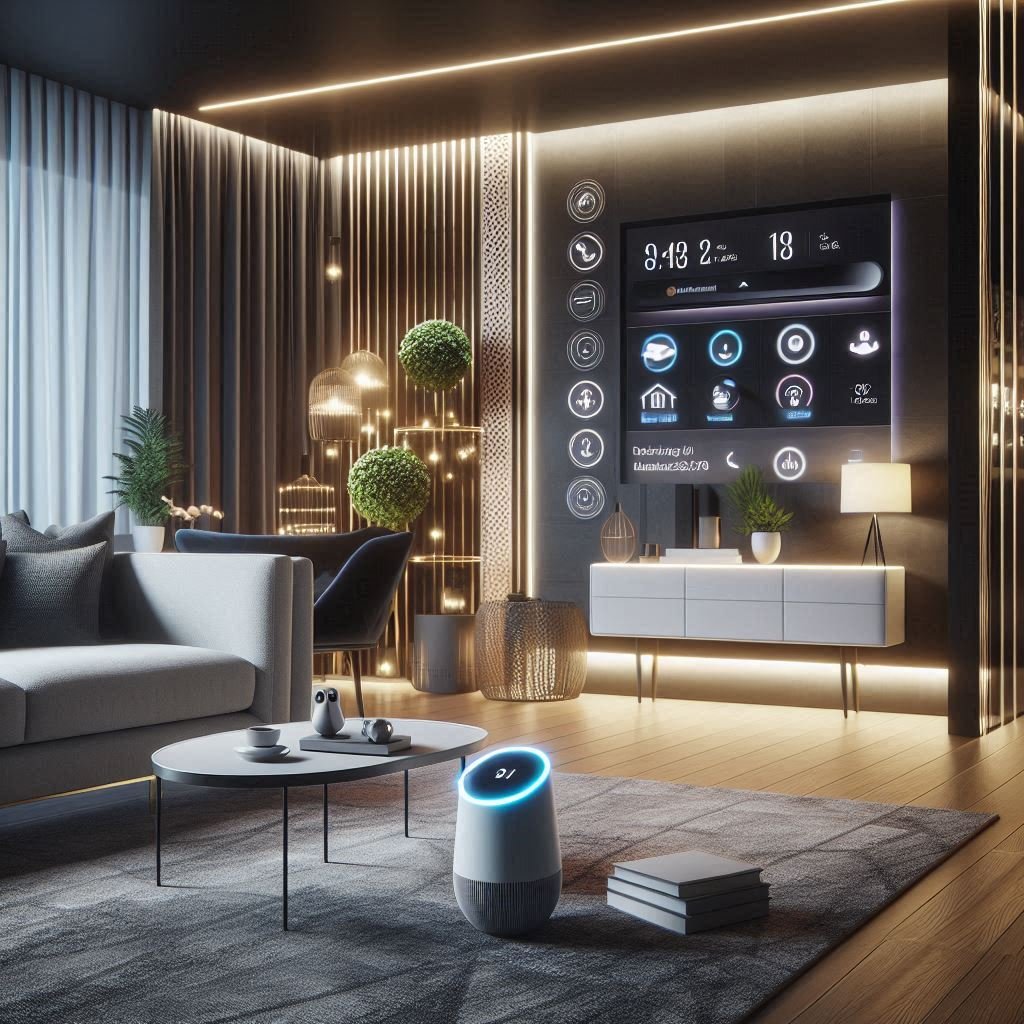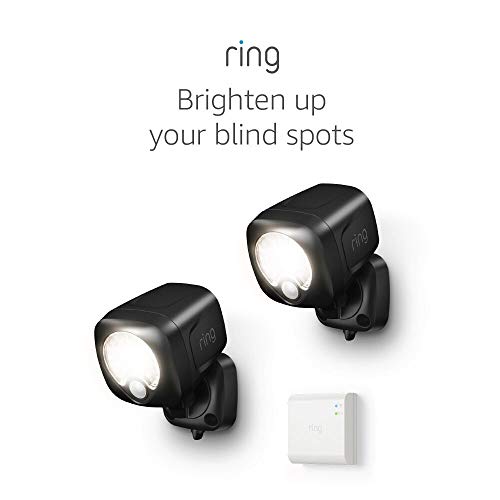
Understanding Smart Home Automation
Smart home automation refers to the integration of technology into everyday tasks, allowing homeowners and renters alike to control devices and systems remotely or automatically. This includes a wide range of applications, from smart lighting and thermostat control to security cameras and door locks. For renters, understanding smart home automation is crucial as it presents an opportunity to enhance convenience, security, and energy efficiency without making permanent changes to a rental property.
The primary benefits of implementing smart home technology in a rental space are significant. Firstly, convenience is dramatically improved; tasks that once required physical effort can now be managed through smartphones, tablets, or voice commands. For instance, smart lighting can be programmed to turn off automatically when leaving the home or adjust according to daily routines. Such automation not only saves time but also enhances the overall quality of life by simplifying daily operations.
Security is another critical aspect. Smart home automation offers renters peace of mind through a variety of security features such as smart locks, doorbell cameras, and motion sensors. These devices enable real-time monitoring and alert notifications, allowing occupants to oversee their rental property, regardless of their location. This increased level of security can deter potential intruders and provide renters with an added layer of protection.
In terms of energy efficiency, smart home devices contribute to reduced utility costs. Smart thermostats, for example, can learn your habits and adjust heating and cooling settings accordingly, ensuring optimal energy usage without sacrificing comfort. It is also essential to differentiate between smart devices that require permanent installation and those designed for renters. The latter typically include plug-and-play options, which can be easily removed upon lease termination. Through careful selection, renters can enjoy the benefits of smart home automation without compromising their rental agreements.
- Night Vision,HDR Resolution,Local Storage Backup,Talk and Listen
Choosing the Right Smart Devices for Renters
When considering smart home automation for renters, selecting the appropriate devices is crucial for enhancing living conditions while ensuring compliance with lease agreements. Many smart devices are designed to be easily installed and removed, making them ideal for those in rental situations. Categories of devices to consider include smart bulbs, smart plugs, smart locks, and smart thermostats.
Smart bulbs are an excellent starting point for renters, allowing for easy customization of lighting without needing to replace existing fixtures. These bulbs can often be controlled via a smartphone application or voice commands through compatible ecosystems like Amazon Alexa or Google Home, providing convenience without permanent alterations. Similarly, smart plugs can transform ordinary appliances into smart devices by enabling remote control or scheduling, again facilitating simple installation and removal.
Security is another significant aspect of smart home automation for renters. Smart locks are available that require no permanent installation, simply replacing the existing deadbolt on the door. Many models work with existing key systems, ensuring that security measures can be both effective and renter-friendly. Additionally, smart thermostats can be beneficial in maintaining an efficient energy system. However, it is essential to check that these devices do not require a hardwired connection that would make them unsuitable for transient living situations.
Moreover, renters must consider compatibility with existing home networks and ecosystems. Devices that seamlessly integrate with platforms like Amazon Alexa, Google Home, and Apple HomeKit will enhance usability and ensure a cohesive smart home experience. This compatibility factor not only plays a role in functionality but also affects user experience, making it imperative for renters to prioritize devices that can easily connect to their preferred system.
- A battery-powered spotlight that shines 400 Lumens of brightness on driveways and other areas when motion is detected.
- This Starter Kit includes one Ring Bridge to place indoors so you can get notifications, customize settings, and connect…
- Spotlights install in minutes with a wire-free design and included toolkit to illuminate your driveway, patio, or yard.
Installation Tips for a Temporary Smart Home Setup
Setting up a smart home automation for renters can be a rewarding experience, providing convenience and efficiency while ensuring that the property remains intact. The key to successfully installing smart home devices in a rental unit lies in utilizing methods that do not require permanent modifications. Here are several tips to help you achieve this.
First, consider using adhesive mounts for devices such as smart cameras or sensors. These mounts can securely attach to walls or furniture without causing damage or leaving marks when removed. Ensure that any adhesive you select is designed for such applications, as this will prevent any potential peeling or residue left on surfaces.
When it comes to connectivity, opt for wireless devices that can easily integrate with your home network without the need for hardwired installations. Devices such as smart bulbs, smart plugs, and wireless doorbell cameras are excellent options. These devices generally operate on a Wi-Fi network and can be easily installed and removed. Take care to check the compatibility of these devices with your existing network before purchasing.
Batteries are another solution for rent-friendly smart home automation. Many smart devices, including sensors and lighting options, operate on batteries, eliminating the need for outlets or power sources. This not only reduces the complexity of your installation but also simplifies device placement throughout your home.
It’s essential to read through your lease agreement to ensure compliance with any rules regarding modifications or installations within your rental property. Document any existing conditions before and after device installation, providing yourself with a record that can safeguard your security deposit. By following these tips, you can implement a smart home automation for renters that enhances your living space while maintaining your commitment to preserving the property.
- Group Cync Devices: Gruppieren Sie diesen Indoor-Bewegungssensor mit Cync und Cync by GE-Smart-Glühbirnen, Smart-Plugs u…
- Programmierbarer Bewegungsmelder: Planen Sie Ihren batteriebetriebenen Bewegungssensor so ein, dass er während bestimmte…
- 【Schaltet Geräte aus】 Dieser Bewegungslichtsensor funktioniert mit Cync Smart Plugs, um Geräte wie Flacheisen oder Raumh…
Maintaining a Renter-Friendly Smart Home
As a renter, maintaining a smart home automation system that aligns with your leasing agreement is vital for ensuring your living experience is both enjoyable and non-disruptive. One of the key aspects of managing a renter-friendly smart home is meticulous documentation. Keeping a record of all devices and their setup configurations not only simplifies the process of re-establishing your smart home in a new location but also aids in troubleshooting issues that may arise during the course of your tenancy. For instance, noting down the model numbers, installation procedures, and any integration steps taken with other devices ensures that you can easily replicate your smart home automation setup when you move out.
Additionally, many common troubleshooting methods can be employed without the need to involve property management or external technical support. For instance, Wi-Fi connectivity issues can often be resolved by resetting your router or ensuring that devices are within range. Furthermore, unfamiliar device behavior can usually be managed by checking for software updates or consulting the device’s user manual. Familiarizing yourself with the troubleshooting steps of each component of your smart home system can save you from potential inconveniences.
Privacy and security are paramount as well when it comes to smart home technology. Renters must be vigilant about their personal data given the interconnected nature of many smart devices. Utilize strong, unique passwords for each device, and enable two-factor authentication wherever possible. Regularly review the privacy settings within each smart home application to ensure that you are comfortable with the information being shared. Finally, consider implementing a guest Wi-Fi network specifically for your smart devices; this can help safeguard your main network from unauthorized access while maintaining the functionality of your smart home automation for renters.


